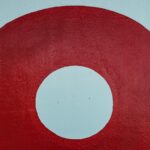Difference Between Watercolor and Acrylic Brushes
Watercolor and acrylic painting require different types of brushes that cater to the unique characteristics of each medium. Though both mediums involve the use of brushes to create art, understanding the distinctions between watercolor brushes and acrylic brushes is essential to achieve desired results.
Table of Contents
Watercolor Brushes
Watercolor brushes are specifically designed to hold and distribute water effectively. Made with natural hairs, such as squirrel, sable, or squirrel-synthetic blends, these brushes possess excellent water retention properties. They are usually identified by their soft and natural bristles that allow for smooth and controlled strokes, essential for achieving the watercolor’s characteristic transparency and delicate touch.
Watercolor brushes come in various shapes and sizes, including round, flat, and mop. Round brushes have a pointed tip and a full belly, commonly used for intricate details or filling small spaces. Flat brushes, on the other hand, have a rectangular shape with medium-to-long bristles, suitable for both broad washes and fine lines. Mop brushes have a large, round body and are perfect for applying washes or covering large areas quickly.
The beauty of watercolor lies in its fluidity and spontaneous nature. Watercolor brushes help artists control the flow of water and pigment on the paper, allowing them to achieve the desired effects effortlessly.
Acrylic Brushes
Unlike watercolor brushes, acrylic brushes are typically made of synthetic fibers such as nylon or polyester, as acrylic paint is harsher than watercolor and can damage natural hair brushes. Due to the thicker consistency of acrylic paint, these brushes are designed to be stiffer and more resilient, allowing artists to manipulate the paint effectively on various surfaces.
Acrylic brushes are available in a wide range of shapes and sizes as well, each serving a specific purpose. Round brushes are useful for detailed work, while flat brushes excel in covering large areas quickly. Filbert brushes possess rounded yet flat tips, enabling artists to create soft edges and blending effects. Fan brushes have thin, spread-out bristles that allow for subtle textures and delicate strokes.
It is worth noting that some brushes are explicitly labeled for use with acrylics, as they are resistant to the harsh chemicals found in acrylic paints. These brushes are specifically designed to withstand frequent cleaning without losing their shape or texture.
Differences in Use
The main difference between watercolor and acrylic brushes lies in their ability to retain and distribute moisture. Watercolor brushes hold water and pigment within their bristles, while acrylic brushes focus on providing control and manipulating the thicker consistency of acrylic paint.
It is possible to use watercolor brushes for acrylics, but they may not withstand the abrasive nature of acrylic pigments. Conversely, using acrylic brushes for watercolor may result in difficulty achieving the delicate washes and controlled transparency typical of watercolor paintings.
Moreover, the cleaning methods differ for each type of brush. Watercolor brushes require less rigorous cleaning, as watercolors are water-soluble and easy to remove from the bristles. On the other hand, acrylic brushes demand thorough cleaning with either water or appropriate cleaning agents to prevent the paint from drying and hardening on the brush, which can damage its bristles over time.
Conclusion
Understanding the difference between watercolor and acrylic brushes is crucial for any home expert artist. Watercolor brushes emphasize water retention and controlled transparency, while acrylic brushes focus on manipulating a thicker paint consistency. While there may be some overlap in the usage, using the appropriate brush for each medium ensures optimal results and prolongs the lifespan of the brushes.
So, whether you are immersing yourself in the luminous world of watercolor or exploring the versatility of acrylics, selecting the right brushes for your chosen medium is an important decision that will greatly elevate your artistic experience.


